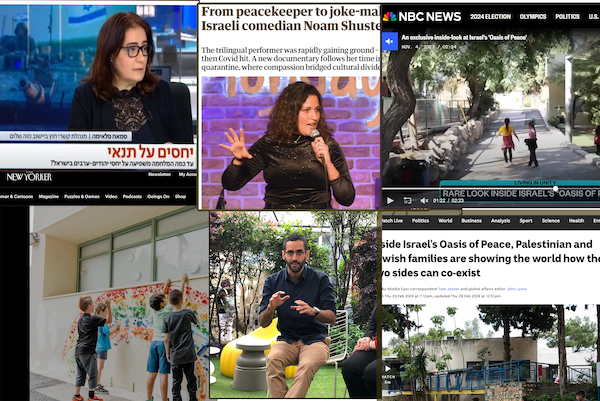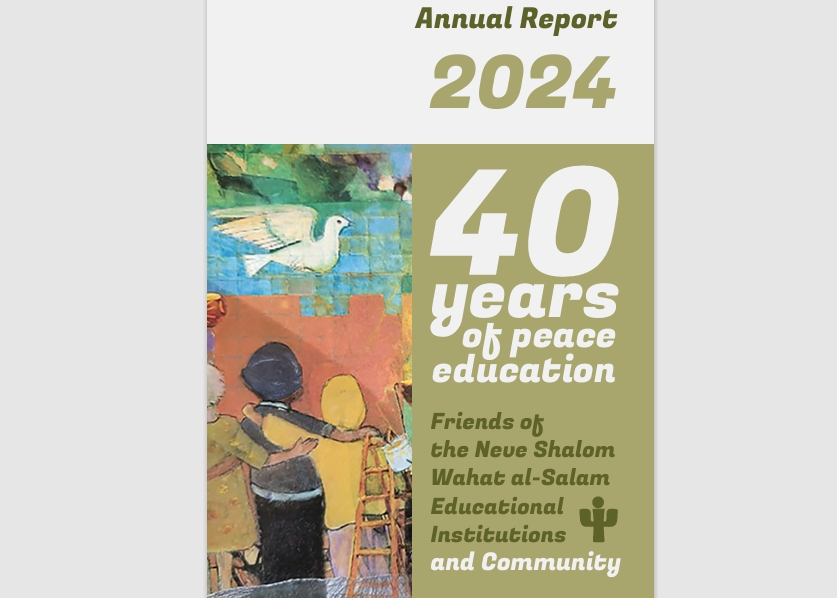Suitcases incongruously made of cement, or piled haphazardly on a wheelbarrow. A circle of rocks with an inscribed pathway of notes on the “situation” that leads back around to itself. Two headless bodies fused into one, fighting itself.
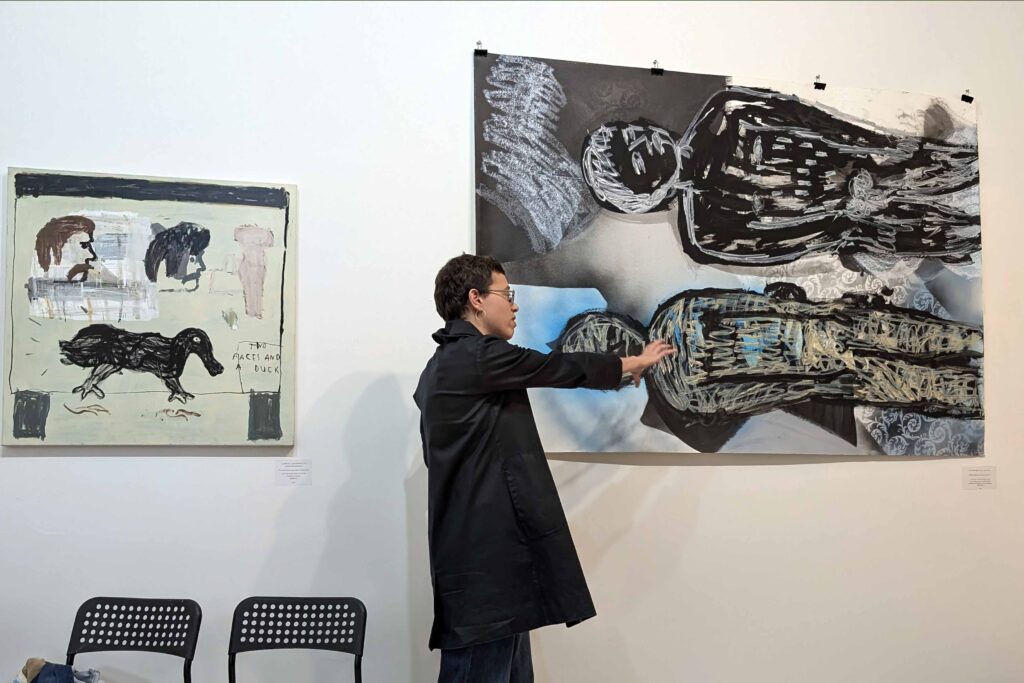
In the closing event of the exhibit “Where to?” in the Oasis Art Gallery, it was clear that the question asked in the name is not even rhetorical. The art is such that it to poses the dilemma, without providing answers. This exhibit was unique in that the works of art were immersed in a sort of running conversation on the situation, in the form of signs and photos leading one through the questions Dyana Shaloufi-Rizek has asked since the beginning of the war before ultimately ceding to the enormity of the issues.
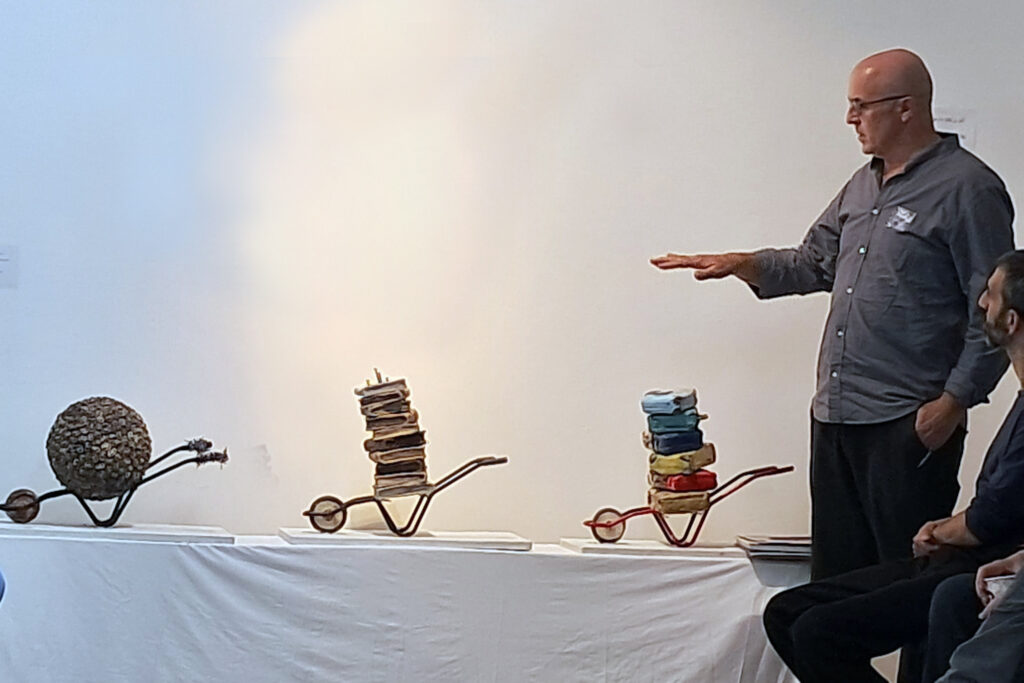
As the artists who were present explained their work, it became apparent that Jews and Palestinians could not only share an exhibition space – even in these trying times – but that the two groups can share their pain and their attempts to cope through art. Thus, the work of Dan Reisner, who paints and sculpts through dealing with PTSD, resonates with many Palestinians. And the ceramic pieces of Kanaan Abdallah, which represent displacement and longing, resonate strongly with Jewish holocaust memories.

In addition to Reisner and Abdallah, Shireen Manassa (who is also an architect who designed several buildings in the village) spoke about her suitcases made of cement blocks and her painting that represents hope, in contrast with much of the other work. Sara Benninga spoke about the process of creating multimedia works in which the humans (in this case soldiers) are both strongly present and erased.
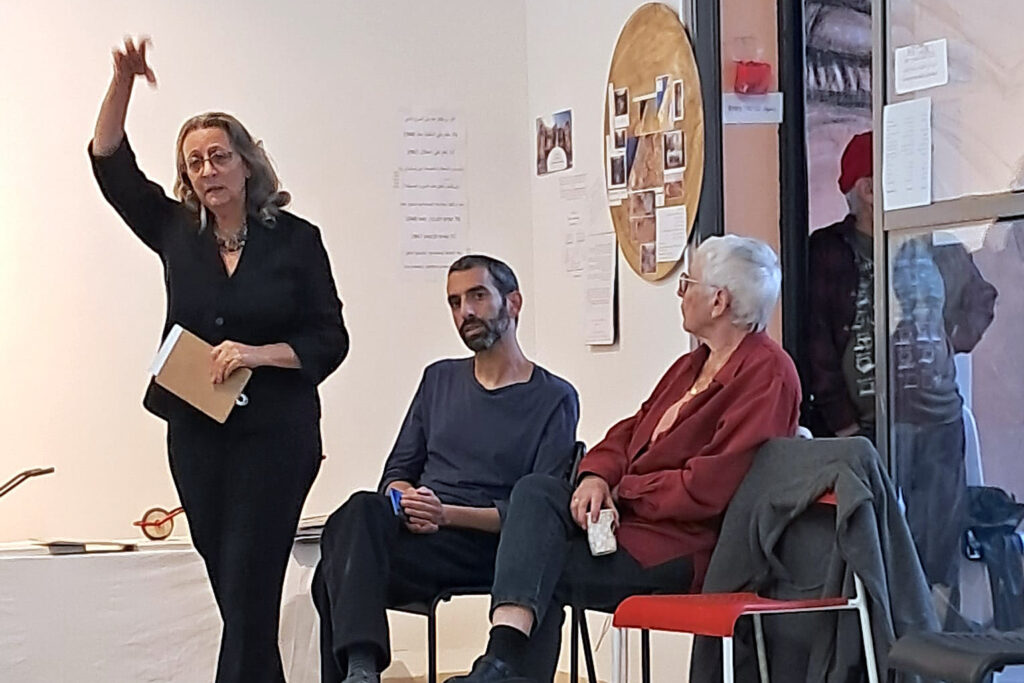
Curator Dyana Shaloufi-Rizek spoke briefly on the other works – the Two Faces and a Duck of Vered Gerztenkorn and the wall-sized painting of hundreds of birds in white and touches of color on black by Karim Abu Shakra.
She then led the group on a second tour around the exhibit, this time of small images taken from news sites and Google Earth, presenting different aspects and views of the war. These were not so much an art exhibit as her personal “sharing out of pain.”
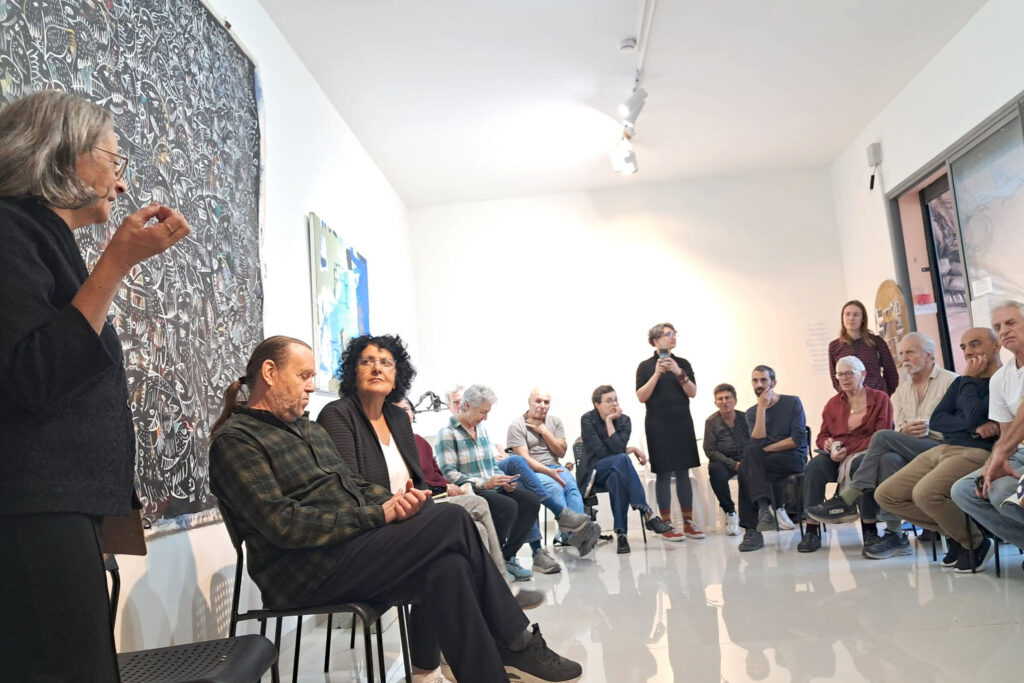
After a short break, the group reconvened to discuss the insights and emotions raised by the exhibit.

